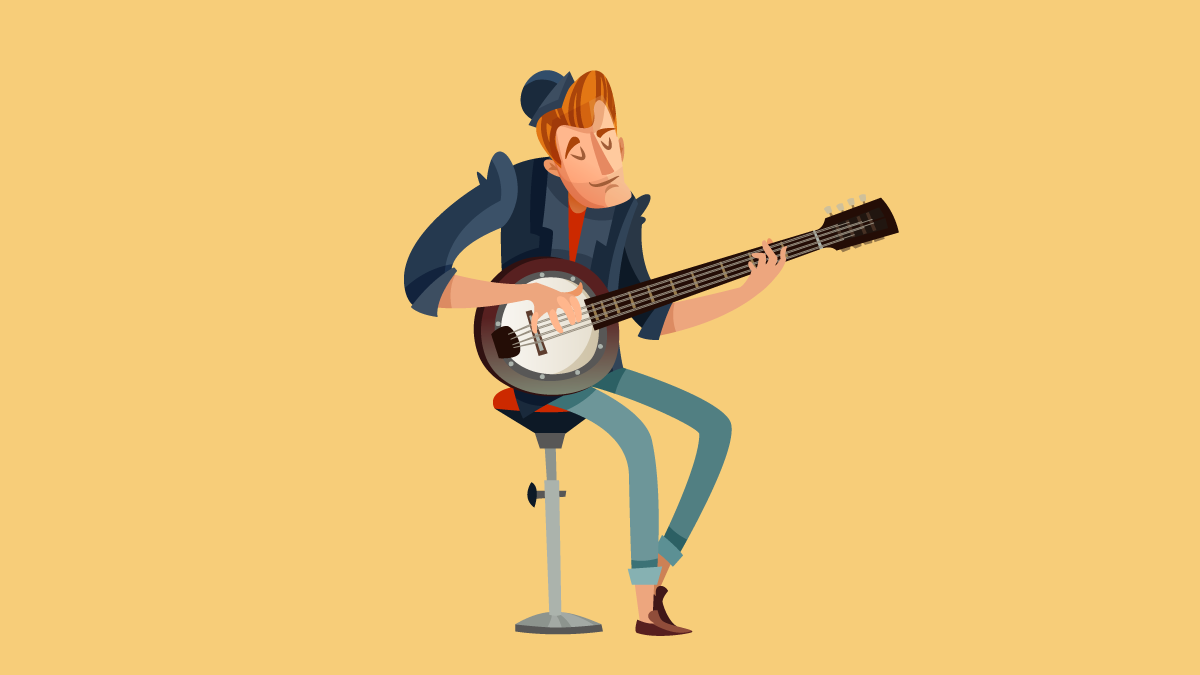
There’s nothing cooler than learning a new musical instrument. Just imagining yourself able to produce the sounds of your favorite music genre is enough to get you drooling. On the list of most popular instruments, the banjo is often recognized for its unique sound and rhythm. It’d definitely be on your to-learn list if you’re a big fan of country music, although the rumors about it being too hard to learn can greatly demotivate an enthusiastic newbie. Is it really that difficult, though? How hard would it be to teach it to yourself?
Honestly speaking, it’s not a yes-or-no answer. To determine its difficulty, you’ll need to understand the different types of banjo and the best way to get started, as a beginner – and we’re here to help you figure that out. Here’s everything you need to know about learning the banjo.
Different Types of Banjo
There are three main components that go in a banjo: the strings, the body, and the neck. Meanwhile, the type of banjo can be divided into two categories according to the number of strings and the type of body.
When it comes to the number of strings, it’s classified into three types: four, five, and six-string banjos. Five-string banjos are the most popular variants; they were the first banjos created, and they’re also the easiest to learn. This kind of banjo has 4 strings along with a smaller fifth one, commonly as a tuner on the side to adjust. This is also the banjo variant that can be used to produce the all-too-popular country-style tone that’s associated with the banjo. As for the six-string banjo, it’s closer to how a guitar would work, although the tone it produces is that of a banjo. In other words, the tones produced from a six-string banjo is lighter than its guitar equivalent. Four-string banjos are often used as the bass instrument to complement the chords in performances where the banjo is used as the lead instrument.
Moving on to the type of body, the banjo can either be open-back or closed-back (aka resonator). This difference in the body results in a great difference in the music produced. Open-back banjos deliver a lower music intensity, producing the familiar country music vibe. As for the closed-back or resonator banjo, the music produced is much fuller and louder. The extra weight of the closed-back makes it heavier than open-back banjos, and it also serves in resonating the sound and making the tone brighter. They’re often played with fingerpicks.
Is Learning Banjo Hard?
If you’re looking for a short answer, then you’ll be glad to know that learning banjo can be much easier than learning guitar. In fact, the banjo is often admired for being the easiest-to-learn string instrument. However, that’s only true in the case of a five-string banjo. Six and four-string banjos are relatively much harder to learn and play.
This begs an important question. If it’s so easy to learn, where did the rumor about it being so hard to learn originate from? The difficulty of playing the banjo doesn’t refer to the ability to learn the basics. Learning the basics to play the five-string banjo is pretty forward. You’ll be able to get the hang of playing the G, C, and D chords in no time. The real difficulty arises from having to practice the same moves hundreds and thousands of times until you’re comfortable enough to play various melodies. As such, it’s more of a mental challenge rather than a physical one.
How to Choose a Banjo for Beginners
Now that you don’t have much to worry about regarding learning the five-string banjo, it’s important to pay attention when choosing your banjo of choice. As Sophia, Jason, and Jonathan explain on this page, finding the best banjo for a beginner can be quite tricky. There are three main factors that will affect your choice of banjo: your budget, the kind of music you want to play, and whether you’re right or left-handed. By taking these factors into consideration, you should be able to narrow down your search for the most suitable banjo.
Where to Get Started
It stands to reason that finding a good teacher is always better than self-learning your way around a banjo. A good teacher will be able to give you direction and motivate you to keep going. However, you don’t always have to enroll in a school to find a good teacher; you can find an online course to reap the same benefits. At the end of the day, the amount of practice and effort into learning the banjo is what will dictate how good you become.
Contrary to popular belief, the five-string banjo is the easiest string instrument to play – at least, many professionals consider it to be so. Other string-variants are relatively harder to learn and play, so beginners looking for playing their favorite country-style music should stick to the five-string variant. Afterward, it all comes down to the amount of effort and time invested in practicing the instrument.




